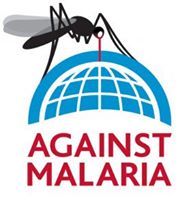Primer
Cost-effective charity primer
Recently a friend asked me to share my recommendations about charitable giving. After writing my response, I realized others might benefit from it. Philanthropy is one of my favorite topics and one that I feel very qualified to comment on.

There is an organization, GiveWell, that has been working for over 5 years to find the most cost-effective charities available. It started with two hedge fund managers that quit their jobs to do research full time, at the moment GiveWell has 6 full-time staff. Their main criteria for a good charity are cost-effectiveness, transparency, and room for more funding. Even after looking through hundreds of the most promising charities, they could recommend only a small fraction of them. Their current top list is here.

Another organization, Giving What We Can, has used some research done by GiveWell as a starting point, but has supplemented it with its own independent criteria and resources. It continues to do research (has dozens of volunteers across the world in top universities as well as recently full-time staff) and its current best recommendations are here.
What’s important to note is that both organizations agree completely that The Against Malaria Foundation is the most cost-effective charity out there. The second-best is almost surely Schistosomiasis Control Initiative.

GiveWell has recently added another organization, GiveDirectly, which isn’t accepted by some as a good pick (I agree, read here for a great overview). At this point you’re getting into some serious reading.
One red-herring when choosing a charity is to look at the overhead (how much money goes to administration). I’ve written a short blog post about why this is a bad strategy. I wasn’t able to discuss several other reasons in the blog post, I’m happy to share if you’d like to hear.
I’m afraid to scare you off with so much text and so many links. Here’s the summary. The best two charities are:

Against Malaria Foundation (every $5 you give protects about 1.8 people from malaria while they sleep for at almost 5 years; this is a research-proven way to decrease incidence of malaria, and is even more effective because of cumulative effects: the charity protects whole villages, not just individuals)
Schistosomiasis Control Initiative (every $0.50 cures a person of parasitic worms living in the stomach for an entire year through a single-administration of a pill; children who get treated attend school more often, parents can go to work more often. There are over a billion people who have some sort of parasitic worms in their stomach)